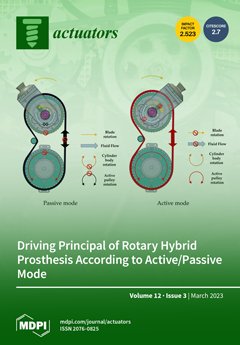Open AccessArticle
Robust Liquid Level Control of Quadruple Tank System: A Nonlinear Model-Free Approach
by
Zahraa Sabah Hashim, Halah I. Khani, Ahmad Taher Azar, Zafar Iqbal Khan, Drai Ahmed Smait, Abdulkareem Abdulwahab, Ali Mahdi Zalzala, Anwar Ja’afar Mohamad Jawad, Saim Ahmed, Ibraheem Kasim Ibraheem, Aws Abdulsalam Najm, Suliman Mohamed Fati, Mohamed Tounsi and Ahmed Redha Mahlous
Cited by 5 | Viewed by 1895
Abstract
In this paper, two new versions of modified active disturbance rejection control (MADRC) are proposed to stabilize a nonlinear quadruple tank system and control the water levels of the lower two tanks in the presence of exogenous disturbances, parameter uncertainties, and parallel varying
[...] Read more.
In this paper, two new versions of modified active disturbance rejection control (MADRC) are proposed to stabilize a nonlinear quadruple tank system and control the water levels of the lower two tanks in the presence of exogenous disturbances, parameter uncertainties, and parallel varying input set-points. The first proposed scheme is configured from the combination of a modified tracking differentiator (TD), modified super twisting sliding mode (STC-SM), and modified nonlinear extended state observer (NLESO), while the second proposed scheme is obtained by aggregating another modified TD, a modified nonlinear state error feedback (MNLSEF), and a
fal-function-based ESO. The MADRC schemes with a nonlinear quadruple tank system are investigated by running simulations in the MATLAB/SIMULINK environment and several comparison experiments are conducted to validate the effectiveness of the proposed control schemes. Furthermore, the genetic algorithm (GA) is used as a tuning algorithm to parametrize the proposed MADRC schemes with the integral time absolute error (ITAE), integral square of the control signal (ISU), and integral absolute of the control signal (IAU) as an output performance index (OPI). Finally, the simulation results show the robustness of the proposed schemes with a noticeable reduction in the OPI.
Full article
►▼
Show Figures





